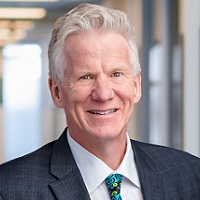 By Nick van Terheyden aka Dr Nick, Principal, ECG Management Consulting
By Nick van Terheyden aka Dr Nick, Principal, ECG Management Consulting
Twitter: @drnic1
Host of Healthcare Upside Down – #HCupsidedown
Most of us have vivid memories of life-changing events. My parents’ generation could tell you exactly where they were, who they were with, and what they were doing when they heard about the assassination of President John F. Kennedy. For me, it’s hearing about the planes hitting the Twin Towers in New York.
But life-altering events come in smaller, more personal sizes as well—like the diagnosis of cancer. Whether it’s your own diagnosis or that of a loved one, nearly all of us have had some intersection with what has long been considered dreaded news.
Episode NOW on Demand
While that dread remains, the cancer journey is no longer quite as negative as it once was, thanks to some amazing scientific progress that has translated into practical ways of treating the disease. With some forms of cancer, patients see outright cures; many others are living longer, without the high price of diminished quality of life.
But that progress has come at a cost. Massive investments in clinical research have contributed to some eye-watering costs at the bedside. Already reeling from a cancer diagnosis, patients and their families have the added burden of navigating complex, multiservice care pathways and figuring out how they’ll pay for potentially life-saving care.
With the aging population, we are seeing an inevitable rise in cancer, and with it medical debt that is quickly reaching crippling and unsustainable levels—a problem that is screaming for solutions.
Jessica Turgon is a principal at ECG and co-leader of the firm’s Oncology Services practice. On this episode, she describes the factors driving the high costs of cancer care and what it will take to bring those costs down. Here are a few excerpts.
Managing the cost of cancer care.
“Providers call it the financial toxicity of cancer treatment—having cancer and this burden of financially trying to navigate care. From a patient’s perspective, cancer care is complex. It’s not something that one provider treats—you have to go and get diagnosed; maybe you have to go to a surgeon, maybe you have to go to the hospital; then you have to talk to a medical oncologist or a radiation oncologist. So the complexity of the care model is also a part of the puzzle. We’re seeing industry groups and associations coming together, trying to figure out how to address some of these financial challenges.”
Investments in technology drive the cost of care.
“The standard of care evolving to a multidisciplinary approach is the best thing for a patient. Being able to have great collaborations through the advent of electronic medical records and digital health, and being able to share information quickly between providers, has helped improve communication between providers and kept patients informed of the different decisions or options available to them. And teams are collaborating across long distances, many reaching patients outside of the area they live in. So that’s all very positive. However, the technology and the scientific achievements in cancer care have also driven a rise in very specific therapies based on an individual’s genomic makeup. The research and the investments that go into that specificity are raising the cost of care across the board, whether it’s a surgical invention with a robot, a new cancer treatment, new drugs, or the newest technology available in radiation oncology.”
Government’s role in making cancer care more affordable.
“Obviously, cancer does have an impact on the aging generation. The payer mix of a cancer center is typically made up about 50% of patients who are on Medicare. And so the government has a significant stake in the financial implications of cancer care across the population. Also, the cost of drugs has risen faster than inflation, even adjusted over the last several years. One of the things that was just recently addressed in the Inflation Reduction Act, signed by President Biden, is to allow Medicare to evaluate and negotiate prices for certain high-cost drugs. So there is an opportunity for the government to take a look at the rising cost of care overall and ways to intervene on behalf of beneficiaries.”
About the Show
The US spends more on healthcare per capita than any other country on the planet. So why don’t we have superior outcomes? Why haven’t the principles of capitalism prevailed? And why do American consumers have so much trouble accessing and paying for healthcare? Dive into these and other issues on Healthcare Upside/Down with ECG principal Dr. Nick van Terheyden and guest panelists as they discuss the upsides and downsides of healthcare in the US, and how to make the system work for everyone.
This article was originally published on the ECG Management Consulting blog and is republished here with permission.
